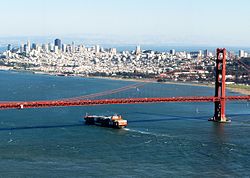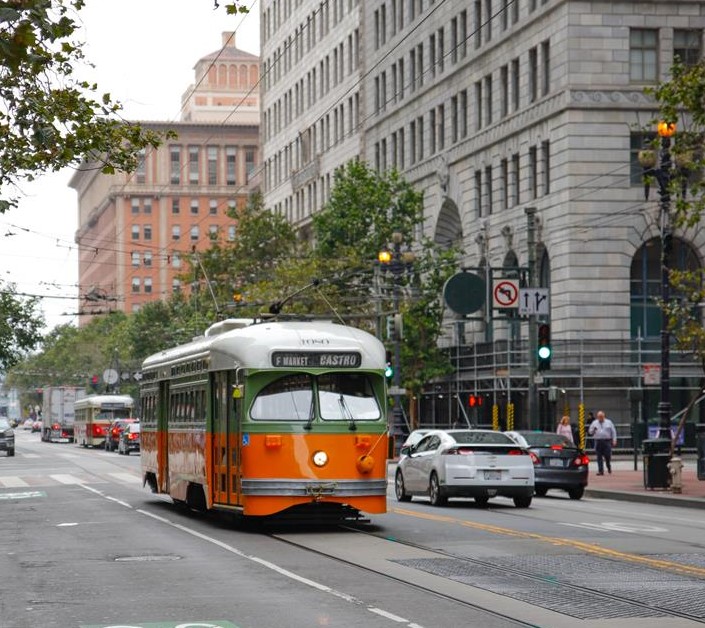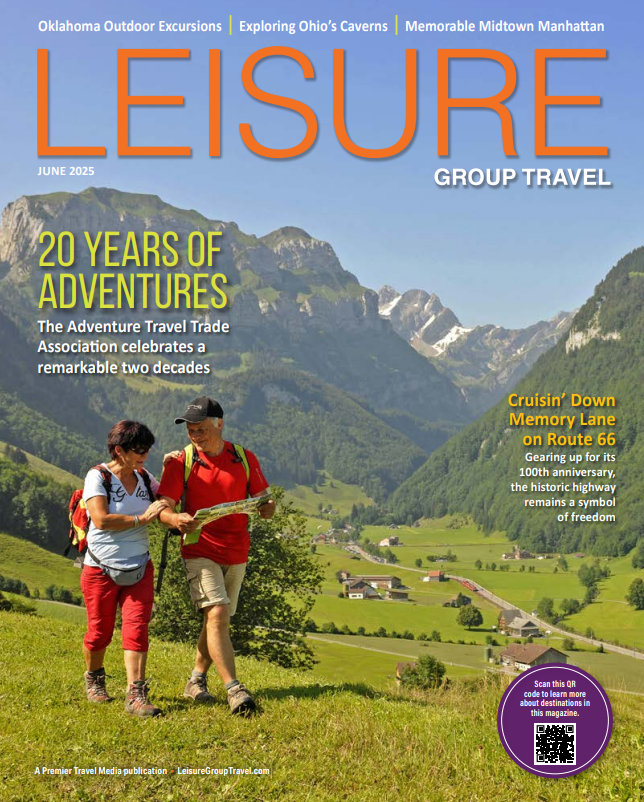 San Francisco’s abundance of museums, outdoor activities and culturally diverse neighborhoods combined with a yearlong temperate climate make the city the ideal destination for travel groups. It’s no wonder tourism has become San Francisco’s largest revenue generator – the city is not too far from being perfectly well-rounded. San Francisco has previously shown strength in four travel industry sectors: commercial, meeting and group, and leisure. In the early 1980s, many large corporations left San Francisco because high-operating costs threatened profitability.
San Francisco’s abundance of museums, outdoor activities and culturally diverse neighborhoods combined with a yearlong temperate climate make the city the ideal destination for travel groups. It’s no wonder tourism has become San Francisco’s largest revenue generator – the city is not too far from being perfectly well-rounded. San Francisco has previously shown strength in four travel industry sectors: commercial, meeting and group, and leisure. In the early 1980s, many large corporations left San Francisco because high-operating costs threatened profitability.
Economic tendencies shifted toward e-commerce in the 1990s, with the city becoming the front runner in the dot.com boom. Consequently, the city’s commercial industry rallied. This regained prosperity made San Francisco an attractive place to hold conventions and large group meetings. The commercial buzz has been a saving grace for a city that has seen so much fluctuation in the last two decades. Visitors to the Bay area generate over $6.7 billion yearly for San Francisco’s economy, and that exponential growth does not appear to be trend.
Time permitting, your group will get the best grasp of contemporary San Francisco by visiting as many of the city’s neighborhoods as possible. Alamo square, Chinatown, Fisherman’s Wharf, Mission District and Pacific Heights should not be overlooked, nor should Nob Hill, Richmond District or Sacramento Street. The city’s progressive nature is underscored when the food, arts and culture of these places come together to form such an admirable whole, and there is certainly no danger of your group being at a loss for entertainment. Enjoy this history lesson and group travel guide of San Francisco!
Notable Dates in San Francisco History
Originally established as a Catholic mission for the conversion of Native Americans around 1775, San Francisco’s history is dotted with events that have drastically changed its growth and significance in the West coast landscape. California grows as the discovery of gold in 1848 drives people westward. As a result of this growth institutions are established and in 1850 the California Legislature created the original counties, including San Francisco (18 Feb).
The Great Earthquake struck on April 18, 1906, at 5:12 a.m. Its magnitude was 8.25 on the Richter scale, and it lasted 49 seconds. The Great Fire that followed caused more damage than the earthquake, destroying about 28,000 buildings. About 3,000 were thought to have died that day while 225,000 were left homeless.
The opening of the San Francisco-Oakland Bay Bridge and the Golden Gate Bridge in 1936 and 1937, respectively, made the city more accessible, and its population grew faster in the 1940s due to its importance as a military base in World War II. Urban planning projects in the 1950s further transformed the city, tearing down and redeveloping many neighborhoods and introducing major freeways.
In the 1960s, San Francisco became the focal point of the counterculture revolution. Communal living became commonplace, and the intersection of Haight and Ashbury was the movements epicenter. It was then that San Francisco became a haven for many young people seeking peaceful living and mutual understanding, and this national migration pushed San Francisco’s population diversification to where it is today.
Related content: Discover California’s Immigration History at Cultural Museums
Top San Francisco Group Travel Attractions
San Francisco offers an array of group attractions that promise unforgettable experiences for travelers of all ages. From iconic landmarks like Fisherman’s Wharf and the Golden Gate Bridge to enriching museums and thrilling tours, there’s something for every group to enjoy in the City by the Bay. Let’s dive into the top 10 group attractions in San Francisco.
Fisherman’s Wharf: This bustling waterfront district is a must-visit for any group exploring San Francisco. Enjoy fresh seafood, street performances, and iconic attractions like Pier 39, where you can witness playful sea lions basking in the sun.
The Golden Gate Bridge: No visit to San Francisco is complete without crossing the majestic Golden Gate Bridge. Take a group walk or bike ride across this iconic landmark, offering breathtaking views of the city skyline and the Pacific Ocean.
Alcatraz Island: Embark on a captivating group tour to Alcatraz Island, home to the infamous former federal prison. Explore the cell blocks, hear intriguing stories of notorious inmates, and admire the island’s natural beauty.
Golden Gate Park: Spanning over 1,000 acres, Golden Gate Park is a verdant oasis brimming with attractions for groups. Visit the California Academy of Sciences, stroll through the Japanese Tea Garden, or rent paddleboats on Stow Lake.
Related content: Fabulous Female Entrepreneurs of California’s Wine Country
Exploratorium: Perfect for groups of all ages, the Exploratorium offers interactive exhibits exploring science, art, and human perception. Engage in hands-on experiments, enjoy immersive experiences, and expand your knowledge in this innovative museum.
San Francisco Museum of Modern Art (SFMOMA): Art enthusiasts will delight in a group visit to SFMOMA, showcasing an impressive collection of modern and contemporary artworks. Explore thought-provoking exhibitions, attend gallery talks, and appreciate works by renowned artists.
Chinatown: Step into the vibrant streets of San Francisco’s Chinatown, the oldest and one of the largest in North America. Wander through bustling markets, savor authentic cuisine, and marvel at ornate architecture, including the Dragon Gate entrance.
Cable Car Ride: Experience a quintessential San Francisco adventure with a group cable car ride. Climb aboard these historic vehicles and traverse the city’s hilly streets while enjoying panoramic views of iconic landmarks.
California Academy of Sciences: Located in Golden Gate Park, the California Academy of Sciences offers a plethora of group-friendly activities, including planetarium shows, aquarium exhibits, and a rainforest habitat housing diverse flora and fauna.
Muir Woods National Monument: Just a short drive from San Francisco, Muir Woods beckons groups with its serene beauty and towering redwood trees. Embark on a guided nature walk, breathe in the fresh forest air, and immerse yourself in the tranquility of this natural wonder.
From historic landmarks to cultural institutions and natural wonders, San Francisco boasts an array of group attractions sure to captivate and inspire. Whether you’re exploring the city’s iconic sights or delving into its rich history and diverse neighborhoods, a visit to San Francisco promises unforgettable experiences for groups of all sizes. Plan your next group adventure and embark on a journey to discover the magic of this extraordinary city.
Subscribe to Leisure Group Travel for more destination insight and planning intelligence.





